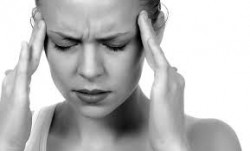How to Stay Safe when Detoxing from Oxycodone
Oxycodone, one of the most powerful semi-synthetic opiates on the market, works well as a treatment for moderate to severe pain symptoms, though not so well when used for recreational purposes. Like most all opiate drugs, oxycodone easily integrates within the brain’s chemical system, according to Harvard Health Publications.
Anyone who’s abused this drug well knows how uncomfortable oxycodone withdrawal can be. After so many months or years of drug abuse, users soon realize that detoxing from oxycodone provides the only means for breaking an addiction problem. When it does come time for detoxing from oxycodone, knowing how to stay safe throughout this difficult stage can help save a person a lot of discomfort and distress.
Oxycodone Withdrawal Effects
The severity of withdrawal effects ultimately determines how difficult detoxing from oxycodone will be. Chronic as well as long-term drug users stand to experience the worst effects when detoxing from oxycodone.
Oxycodone works by increasing dopamine, serotonin and norepinephrine neurotransmitter chemical levels in the brain. These chemicals play a central role in regulating several bodily systems, including:
- Respiration
- Heart function
- Emotional stability
- Cognitive functions
- Gastrointestinal functions
- Sleep cycles
Withdrawal effects can vary, though the more severe the addiction the more difficult detoxing from oxycodone will be. Withdrawal effects may include:

Withdrawal from Oxycodone can cause painful headaches.
- Insomnia
- Headaches
- Random aches and pains
- Diarrhea
- Anxiety
- Feelings of sadness
- Alternating chills and hot flashes
- Profuse sweating
Tips for Detoxing from Oxycodone
The Importance of Getting Good Night’s Rest
Sleepless nights can be expected when detoxing from oxycodone so finding safe ways of alleviating insomnia symptoms can go a long way towards easing the withdrawal phase. In general, over-the-counter sleep aids only work to create another dependency that can cause problems in the long run.
Instead, try to get some form of exercise every day, such as walking or jogging, as long as it raises the body’s heart rate. Eliminating caffeine and nicotine from your diet can also help in getting a good night’s sleep.
Remedies Nausea and Vomiting
Periods of nausea and vomiting will come and go throughout the detox stage, which can be excruciating to say the least. Remedies for nausea and vomiting provide much-needed relief from these symptoms.
Over-the-counter products, such as Pepto-Bismol offers considerable relief from nausea and vomiting. When detoxing from oxycodone, double the recommended dosage since the body is going through “drug recovery mode” as symptoms are likely more severe than the usual bout of gastrointestinal distress.
Consider Medication Therapies
Opiate addictions in general wreak havoc on the body’s chemical balance as a whole. In cases of moderate to severe addiction problems, medication therapies provide considerable relief from drug cravings and withdrawal effects.
Medications commonly used for detoxing from oxycodone include:
- Suboxone
- Methadone
- Subutex
These treatments work to support damaged brain chemical processes, which ultimately account for the uncomfortable withdrawal effects experienced. As it’s not uncommon for withdrawal discomfort to drive a person back to using, medication therapies greatly increase the likelihood of a successful detox stage.


 Methamphetamine Detox Centers -
Some methamphetamine withdrawal symptoms are dangerous and can even be fatal, making it imperative that detox take place in a professional facility.
Methamphetamine Detox Centers -
Some methamphetamine withdrawal symptoms are dangerous and can even be fatal, making it imperative that detox take place in a professional facility.  Concerta Detox Centers -
Without professional detox, Concerta withdrawal can bring on a full-blown psychotic episode, putting the addict and others in danger.
Concerta Detox Centers -
Without professional detox, Concerta withdrawal can bring on a full-blown psychotic episode, putting the addict and others in danger.  Opioid Detox Centers -
Opioid detox centers help addicts recover by using a combination of therapies and medications that work to alleviate withdrawal symptoms and restore the brain's chemical balance.
Opioid Detox Centers -
Opioid detox centers help addicts recover by using a combination of therapies and medications that work to alleviate withdrawal symptoms and restore the brain's chemical balance.  Alprazolam Detox Centers -
Detox is the first step in recovering from alprazolam addiction, and professional detox centers provide the tools to do this successfully.
Alprazolam Detox Centers -
Detox is the first step in recovering from alprazolam addiction, and professional detox centers provide the tools to do this successfully.  The Best Methods of Prescription Drug Detox -
As synthetically made compounds, prescription drugs produce powerful effects that gradually interfere with brain and central nervous system functions over time. According to the National Institute on Drug Abuse, when abused, a person can become addicted to prescription drugs just as easily as to illicit drugs like cocaine and heroin. Once addiction sets in, the ...
The Best Methods of Prescription Drug Detox -
As synthetically made compounds, prescription drugs produce powerful effects that gradually interfere with brain and central nervous system functions over time. According to the National Institute on Drug Abuse, when abused, a person can become addicted to prescription drugs just as easily as to illicit drugs like cocaine and heroin. Once addiction sets in, the ...